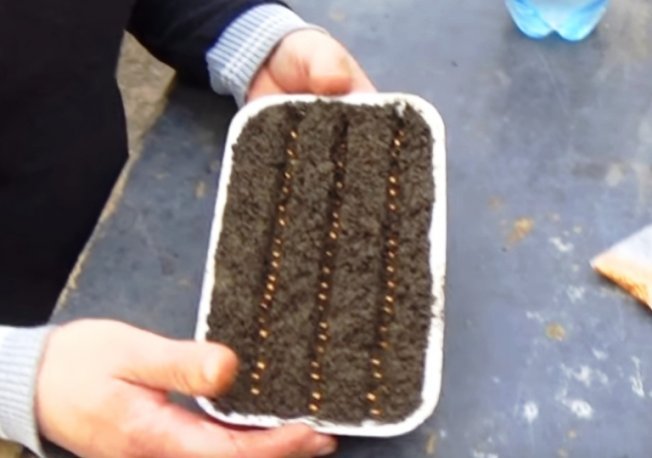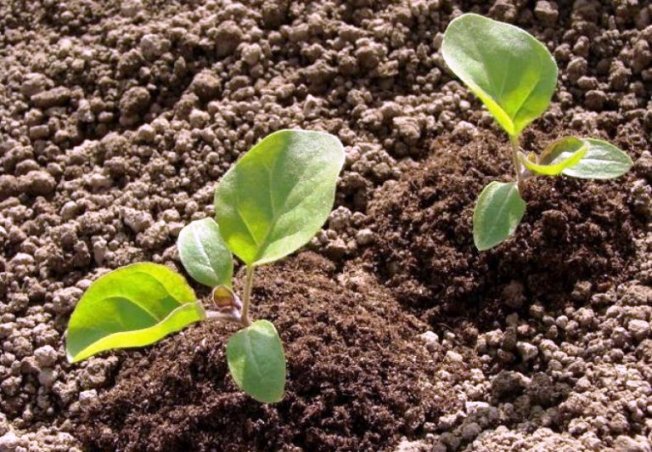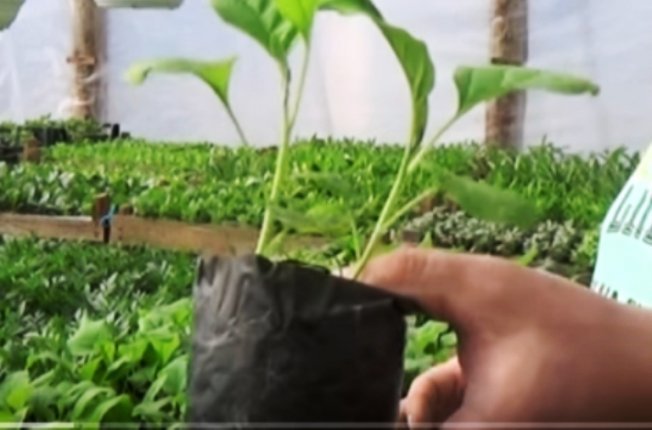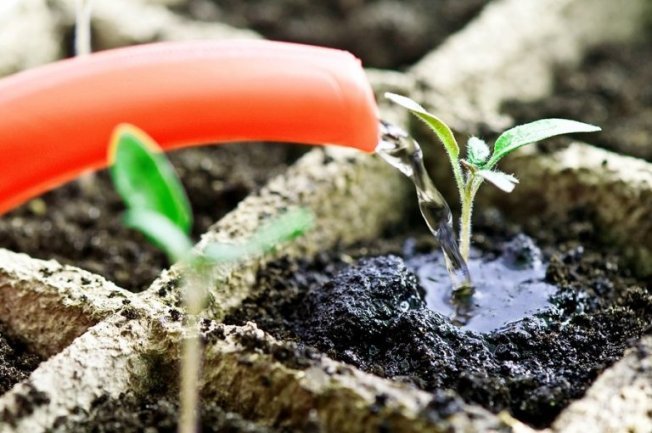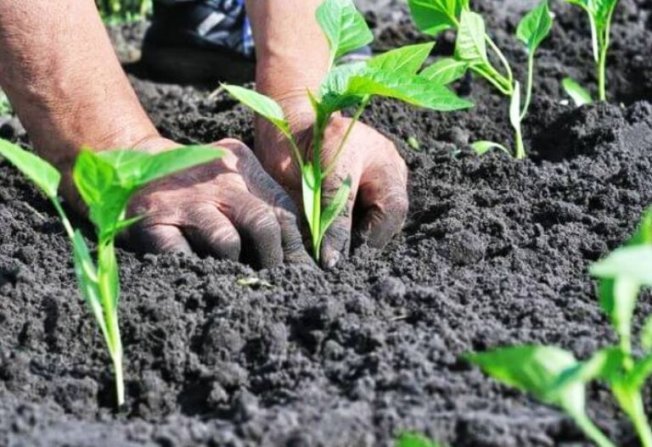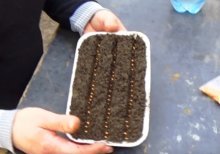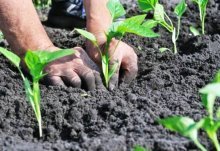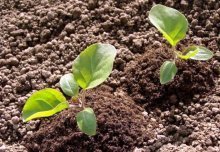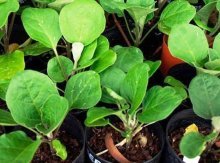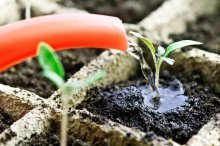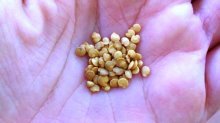Growing eggplant seedlings at home, step by step with photos and videos

Growing planting material for some crops is not so easy. For example, many amateur vegetable growers consider growing eggplant seedlings at home to be an extremely difficult task. However, knowing the rules for preparing the soil, sowing seeds and subsequent care of seedlings, you can get strong seedlings that can please you with active fruiting already in mid-summer.
Content:
- How to choose eggplant seeds
- Preparing eggplant seeds for planting
- When to sow eggplants
- Preparing the soil mixture
- Is picking eggplant seedlings necessary?
- Caring for eggplant seedlings at home
- How and what to feed
- Planting seedlings in a greenhouse and open ground
How to choose eggplant seeds
To obtain a high yield, you will need to choose high-quality eggplant seeds.
When choosing varieties, do not forget that:
- hybrids are characterized by increased resistance to diseases and stress created by weather conditions;
- It is better to give preference to seeds from manufacturers whose products comply with State Standards; the packaging must contain the details of the company and its legal address.
Watch a video with recommendations for choosing seeds:
Preparing eggplant seeds for planting
It is more rational to buy vegetable seeds that have been pre-treated with fungicides: they are more resistant to fungal infections.
To increase germination, seeds should be prepared for sowing.To awaken the seeds and increase their resistance to disease, it is recommended to perform heat treatment. Among the recommendations, there is the option of heating the seeds for 2-4 hours in the oven at a temperature of +50 C, but the quick method carries the risk of overheating, as a result, the germination of the seeds will deteriorate. So it should be used very carefully.
Gentle heating is a more acceptable method. Seeds in fabric bags are placed close to a source of constant heat, for example a central heating radiator, for a long period, about 3 months. Recommended temperature + 30 C.
Even simpler is to perform hydrothermal heating. The fabric bag is placed in a container with warm water, the temperature of which reaches + 40 C, and kept for 3 to 5 minutes.
At the second stage of preparation, the seeds are pickled for 20 minutes in a bright pink solution of potassium permanganate or a 10% solution of hydrogen peroxide.
Next, the seeds are hardened: placed on a damp cloth and covered with the same cloth. Maintain alternately at room temperature (about 20 hours), transfer to the refrigerator for 7-8 hours. Hardening is repeated for 7 days.
A couple of days before the planned planting, the seeds are soaked in rain or melt water. There should be enough liquid so that it does not completely cover the seeds. After soaking, the seeds are dried; they should become crumbly.
When to sow eggplants
Transplanted eggplant seedlings in open ground (greenhouses) at the age of 65 to 70 days. The timing of sowing will have to be determined individually, taking into account the climatic features of the area.
The recommended seed sowing dates for the middle zone are as follows:
when growing vegetables in greenhouse conditions - the second half of February, transplanting into a greenhouse - the second half of May;
when grown in open ground - sowing on March 12-16, transplanting into the ground - from May 20 to June 10.
Preparing the soil mixture
How to prepare soil for eggplant seedlings at home should be described in detail. Of course, you can buy a universal substrate, but it is better to prepare the mixture yourself, taking into account the special requirements of the selected crop.
We indicate the optimal substrate option in Table 1.
| Mixture components | Volume |
| Sod land | 2 l |
| Humus | 8 l |
| Mullein | 1 l |
| Potassium salt | 1 tbsp |
| Superphosphate | 1 tbsp spoon |
Other recipes you can use:
- add 3 parts peat to 1 part sawdust, pour in the mixture for germinating seeds;
- For 2 parts of humus, add 1 part of turf soil, or 1 part of peat and 0.5 portions of sawdust.
You can also use soil from the beds where cabbage or cucumbers were grown.
The resulting substrate is doused with boiling water, heated in the oven or frozen at a temperature below _15 C. Disinfection of the soil should not be abandoned; the procedure will help protect the seedlings from damage by common infections.
To improve the fertility of any mixture, you can add potassium sulfate, urea, ash, and superphosphate.
Let's watch a video on how to grow eggplant seedlings at home:
Is picking eggplant seedlings necessary?
It usually takes 10 to 14 days before emergence. Further care can be carried out in different ways: using picks and without her.
Depending on the chosen option, select containers for sowing:
- if without picking, then immediately prepare a personal container for each bush;
- with picking, the seeds are sown in large containers and then planted.
Plants can be picked after the first true leaves appear. Small seedlings are carefully removed from the ground, along with lumps of earth, transferred or transferred to personal peat pots.
Place the plants in a well-lit room, avoiding direct sunlight on the delicate leaves. If necessary, in the case of a large number of cloudy days, the seedlings will need to be supplemented with light. For this purpose, either special phytolamps or fluorescent lamps are used.
Planting in the ground is carried out after the development of 6-7 true leaves, while the first leaves, cotyledons, do not count. During the planting period, the height of the bushes should be 20-25 cm.
In order not to disturb the very delicate roots of plants, experienced vegetable growers recommend growing each seedling in a personal pot, possibly in a peat pot. 2 or 3 seeds are sown in prepared pots, after germination the strongest sprouts are selected, the rest are removed.
Caring for eggplant seedlings at home
To get strong seedlings, you will need to create favorable conditions for growth and adhere to the rules of care.
It is important to maintain the temperature regime; it should be borne in mind that the temperature requirements at different stages of plant development will be different.
The first two weeks after the emergence of seedlings, the thermometer readings should not exceed + 15-17 C; during this period, the root system is actively strengthened.
Next, the temperature is increased to +25 C during the day, at night it should drop to + 20 C. The night temperature gradually drops to + 14 + 15 C, this will simplify the process of plant adaptation to life in open ground conditions.
Watering seedlings is carried out carefully; constant excessive moisture can provoke the development of fungal diseases, in particular blackleg. The disease is practically untreatable and leads to the death of the bushes. The best option is rare (about once a week) watering with large amounts of water. It should be settled, at room temperature. It is recommended to water regularly; too dry soil does not contribute to the active development of plants.
In February-March, seedlings may suffer from insufficient lighting. You can notice the lack of light by weak, elongated stems. The recommended duration of daylight hours is from 10 to 12 hours, based on this you can calculate how many hours of additional lighting will be required. At home, fluorescent lamps are used to eliminate the problem; they are installed at a distance of half a meter from containers with seedlings.
Let's watch a useful video about caring for seedlings:
How and what to feed
Vegetable growers have different attitudes towards fertilizing. Some believe that the natural balance of nutrients in the soil will allow plants to develop normally. But if you want the seedlings to be strong and 100% viable in open ground conditions, you will still need to add a small amount of fertilizer.
For plants grown with picking, the first fertilizing is done 10 days after emergence, without picking - on the 7th day. Feeding is aimed at stimulating the development of the root system. In both cases you can use:
- yellow Crystal solution (10g per 5 liters of water);
- 1 teaspoon of potassium nitrate dissolved in 10 liters of water;
- solution prepared from a mixture of 1 tsp.ammonium nitrate, 3 tablespoons of superphosphate, 3 teaspoons of potassium sulfate per 10 water.
The amount of solution added is determined by the capacity of the soil in the container; it must be completely saturated with water. Before feeding the plants, you should water them well, otherwise there is a risk of burning the roots.
Planting seedlings in a greenhouse and open ground
Planting time depends on the readiness of the seedlings and weather conditions. In any case, you should wait until the threat of return spring frosts disappears. The approximate time of planting in a greenhouse is the second half of May, in open ground - the first days of June.
Treating plants with a 0.5% solution of copper sulfate will help prevent the development of fungal infections; the procedure is carried out approximately two weeks before the planned planting. From this period they begin to actively harden the seedlings. At first, just open the window for a few minutes, then increase the ventilation time, take the containers with seedlings out into the open air, keeping them for several hours. The day before planting, it is advisable to transfer the containers with plants to the greenhouse and leave them overnight. The soil in containers should be well moistened.
High-quality eggplant seedlings look like this:
- plants are well formed, with a strong stem;
- height from 20 to 30 cm;
- number of sheets from 6 to 12, color - bright green;
- the presence of formed buds is possible.
As you can see, the step-by-step instructions for growing eggplant seedlings at home do not contain any difficult-to-follow recommendations. Creating conditions for the formation of strong plants is not very difficult; proper care will definitely contribute to obtaining a high-quality harvest of everyone’s favorite vegetable.


